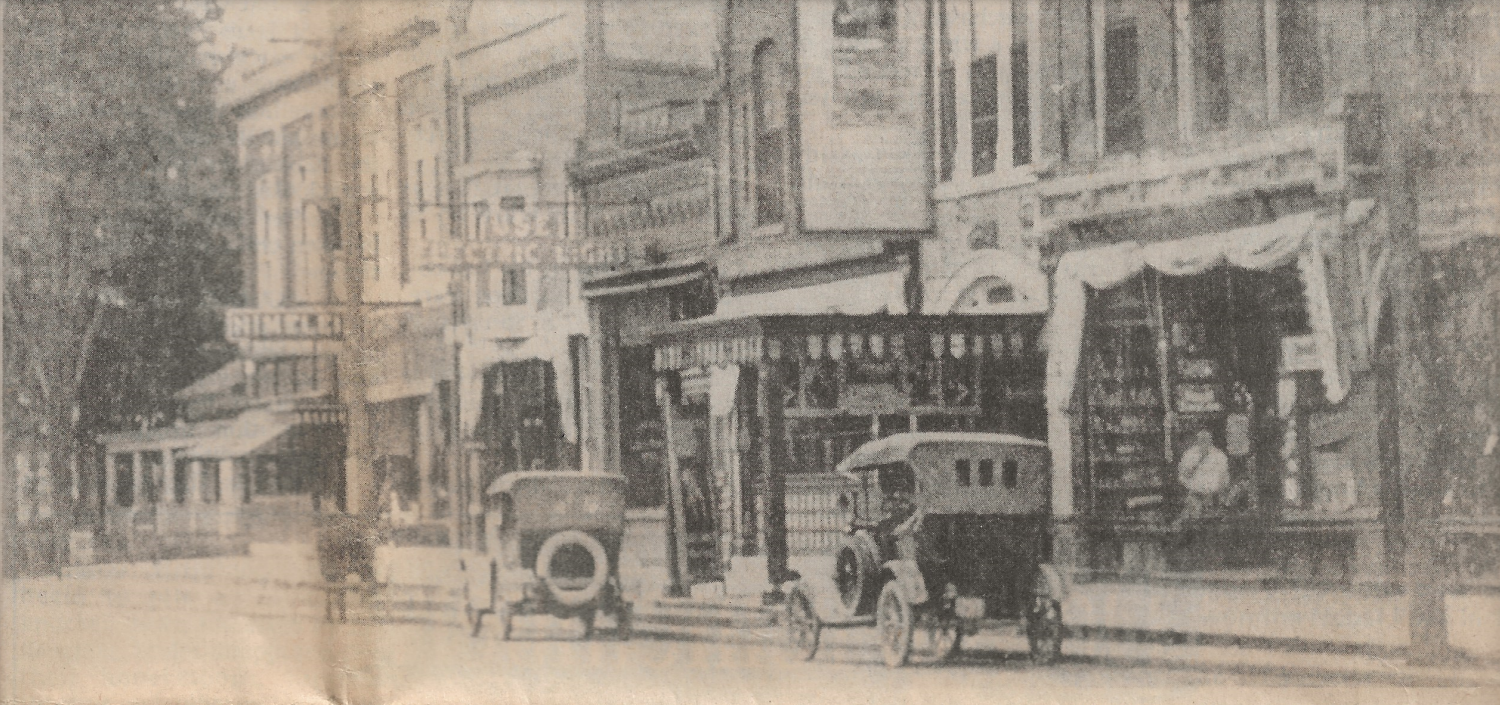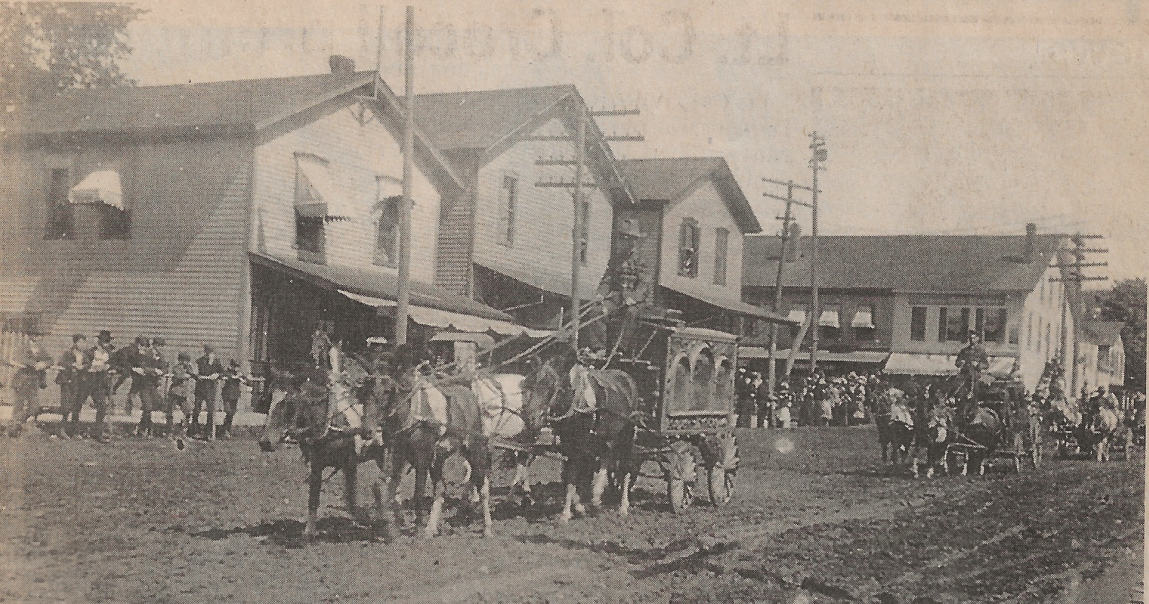A Walk Through Historic Gowanda
Village’s Sesquicentennial Celebration Brings Back Memories Of Unique Past
By Linda Danahy Observer Gowanda Bureau
Gowanda – Although this unique village was formed 150 years ago this August (1998) a glimmer of those long-ago days comes alive with the details of daily life supplied by the historical committee of the sesquicentennial celebration organizers.
Gowanda’s history was lived day to day by those who came before us. Just like us, they were more concerned about making a living than making history. This keepsake calendar is devoted to what concerned them in their daily lives. (calendar published last fall)
A project of Linda Jones, Jean Doehnert, Jean Gieger, Sara Gelia, Irene Koch and Janice Wells with the assistance of Philip Palen and Gowanda Village/Persia Town Historian Jean Hillis, each day’s entry tells the story of Gowanda’s first century and a half in a very readable form. The extensive research of these dedicated volunteers was offered for this article which looks at the early 1800’s through the turn of the last century.
Community began in 1810
The Senecas and other Indian natives must have seen a very different place than the Gowanda of today. The land probably looked more like the unchanging Zoar Valley with the Cattaraugus Creek, (which is actually a river) the focus of sustenance and transportation and the sheltering hills a buffer for a rich valley filled with trees and wildlife.
Written records begin with the arrival of a Quaker settler from Connecticut, Aldrich Turner. He came via the Cattaraugus Creek in 1810 with three sons and three daughters, claiming 707 acres on both sides of the creek. The settlement was called Aldrich Mills. It included a tavern and a trading post that opened in 1816 in a log cabin where the Jr Sr High School is now located.
School was held during the winter of 1817-1818 in the present-day Hidi neighborhood, where the first wood-frame house was constructed in 1817. Saw and grist mills, asheries selling potash and a blacksmith shop were among the earliest industries. A red schoolhouse was built for $120 in 1829 and elementary classes were held on the second floor of the Eagle Tavern, Buffalo & Perry Streets, for a decade beginning in 1830.
By the early 1820’s Aldrich Mills was a regular stagecoach stop. The first bridge was built over the Cattaraugus Creek I, near the present span, but washed away the following spring. Early residents had to travel to Hidi to cross the creek for the next six years.

Aldrich Mills became Lodi in 1822, but the post office was changed to Persia in 1835 because of confusion with another Lodi in the state. However, the village name continued to be Lodi until incorporation.
In 1848 the census was 848, about 2,000 people less than today’s population. On August 1, 1848, 96 ballots were cast with the vote 75 to 21 to incorporate the Village of Gowanda. The post office changed from Persia to Gowanda at this time. However, Hidi remained a separate community until 1878 when it was officially made part of the village.

Gowanda Suggested by Missionary
There has been a great deal of speculation for many years over the name "Gowanda". According to the commitee's research, the early Indians referred to the plaace as "Juc Gowanda", meaning beautiful valley between the hills. The Rev. Asher Wright, a missionary. the Cattaraugus Indian Reservation, is credited suggesting the name for the fledgling village.
The first local railroad was a track between Dayton and Dunkirk that originated in Hornell. When the line was completed in 1851, President Millard Fillmore and his cabinet traveled the route on a "grand excursion." Stages ran daily between Gowanda and Dayton Summit, shuttling train passengers.
Three large hotels and 12 stores were open for business in' the young village by the mid-1850s. The state legislature authorized construction of a wooden covered bridge in 1826 that was funded by taxable properties in both Erie and Cattaraugus Counties. Lodi Bridge survived for 30 years, until "the great fire of 1856." The blaze started in a tub factory, spread get across the bridge, and destroyed more than 50 businesses This was a bad time for Gowanda. The following year, heavy July rains caused Thatcher Brook to overflow, flooding the whole village and destroying a new Main Street bridge. Records show the south branch of the Cattaraugus Creek rose 12 feet within an hour.
Gowanda has been plagued with Thatcher Brook floods throughout its history, and the early accounts paint the same picture as the most recent major crisis on Aug. 1, 1986 that put more than 250 homes and businesses under water. That flood was caused by a succession of thunderstorms that dropped nearly four inches of rain in about six hours, damag!ng the village water facility on_ Pomt Peter Road and leavmg residents to clean up slimy mud for weeks. _Damages totaled more than $1.5 milhon
In 1986' as well as ·in the past, the flooding was worsened by trees, limbs and other debris damming the water course. Last fall, a trash rack to trap debris was installed on the bi:ook and is expected to prevent or minimize future flooding.
The village bounced back in 1857 and, after several more downtown bridges were iost to high water, an iron bridge was built in 1889, a structure that lasted 73 years. The growing town built an addition to a brick school building in 1889, the precursor to the existing Gowanda Elementary School built in 1930. By 1898, the community was booming with two lumber companies, a hardware/builder's supply, drug store, several general stores, two meat markets, harness and saddle shop, carriage shop, two dry goods stores and clock/jewelry and flour/feed stores
This was also the beginning of some industries that provided employment to village residents for many decades. The Gaenssler, Fisher & Co. Tannery was built in 1896, becoming Moench Tanning Co. in1899. Glue was a tannery by product, prior to the establishment of Eastern Tanners Glue Co., forerunner of the later Peter Cooper Corporations, on Palmer treet in 1904. The glue operation closed in 1971, followed by the entire company in 1985. The tannery closed in the early 1990s and was demolished shortly thereafter.
The For a better flavor of early life in Gowanda, read the accompanying chronology of events. Better yet, get your own keepsake calendar and follow delopments through the 1900s as well. Copies of the historic alendar are still available at a nominalcost by calling 532-3412 or 532-3270. Proceeds from calendar sales are being utilized to fund future historical efforts as well as 150th birthday events.
The official sesquicentennial celebration is being planned for the weekend of July 24-26 and will include a large parade. Bryan Bradley, who co-chairs the Gowanda Sesquicentennial Committee with Cynthia Constantine, declined to mention more specific plans at this time, but promised announcements as arrangements are finalized.
The OBSERVER offers its appreciation to the historical committee for sharing its research, along with Historian Jean Hillis for providing photographs and sharing her extensive knowledge of Gowanda.